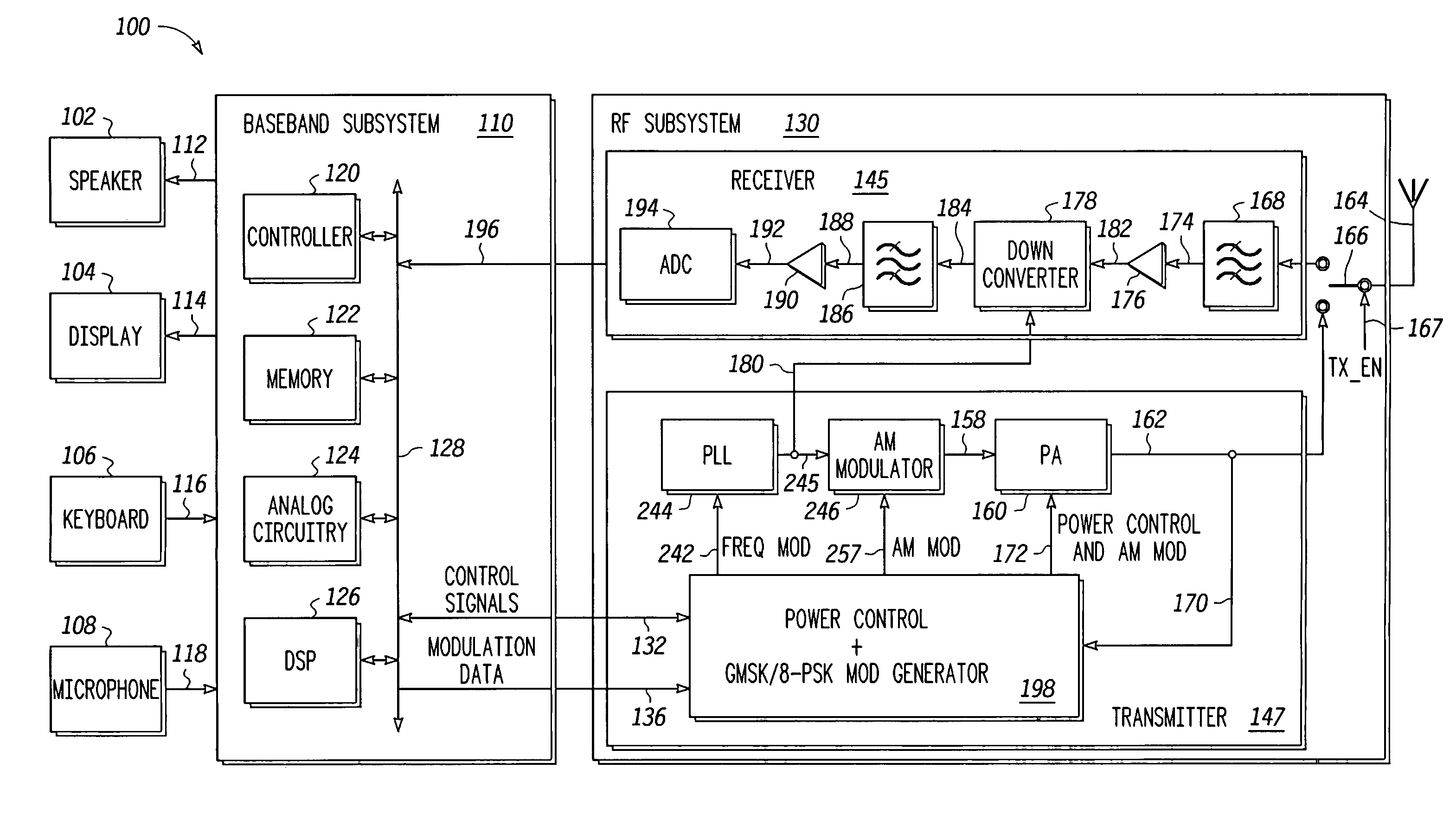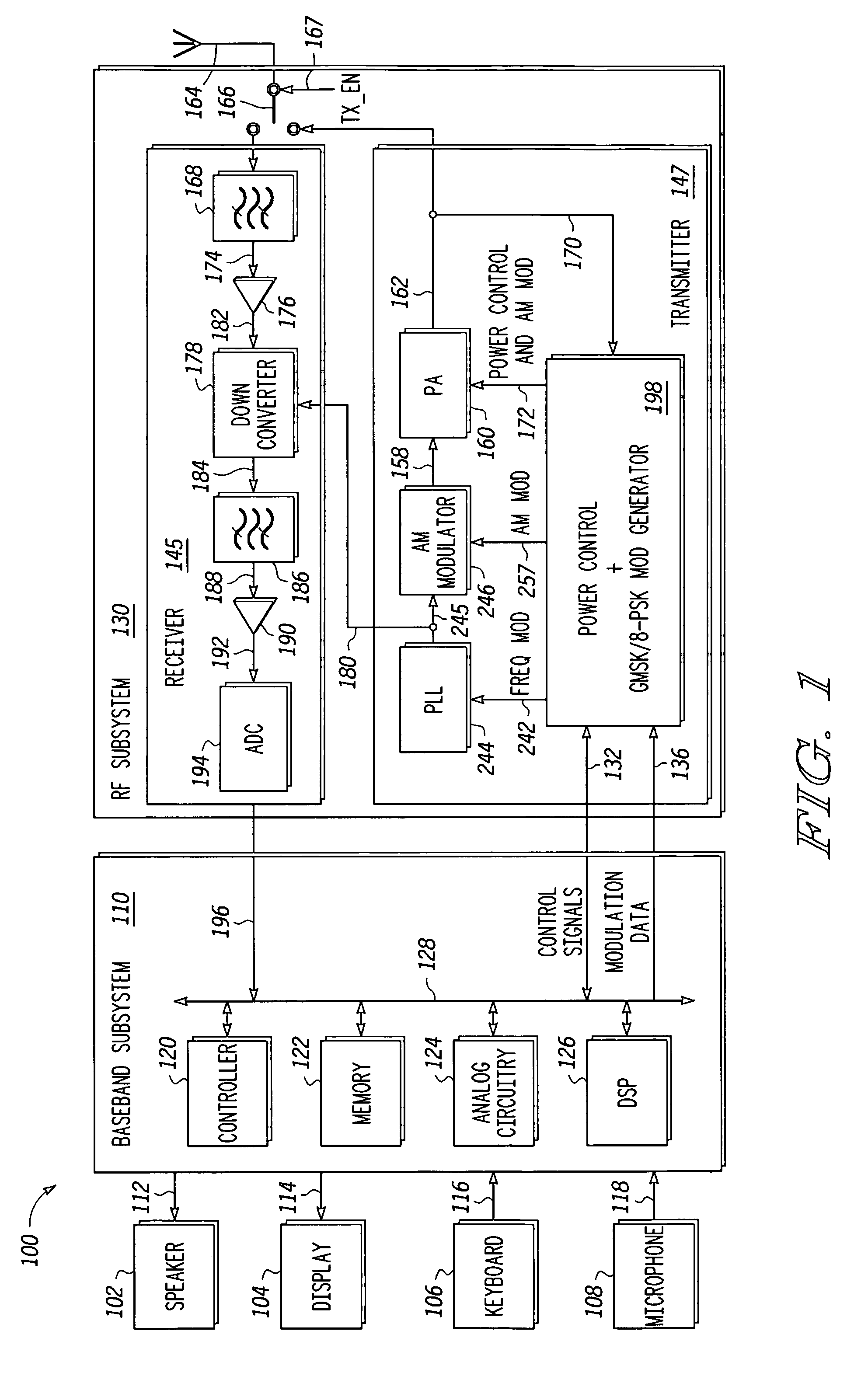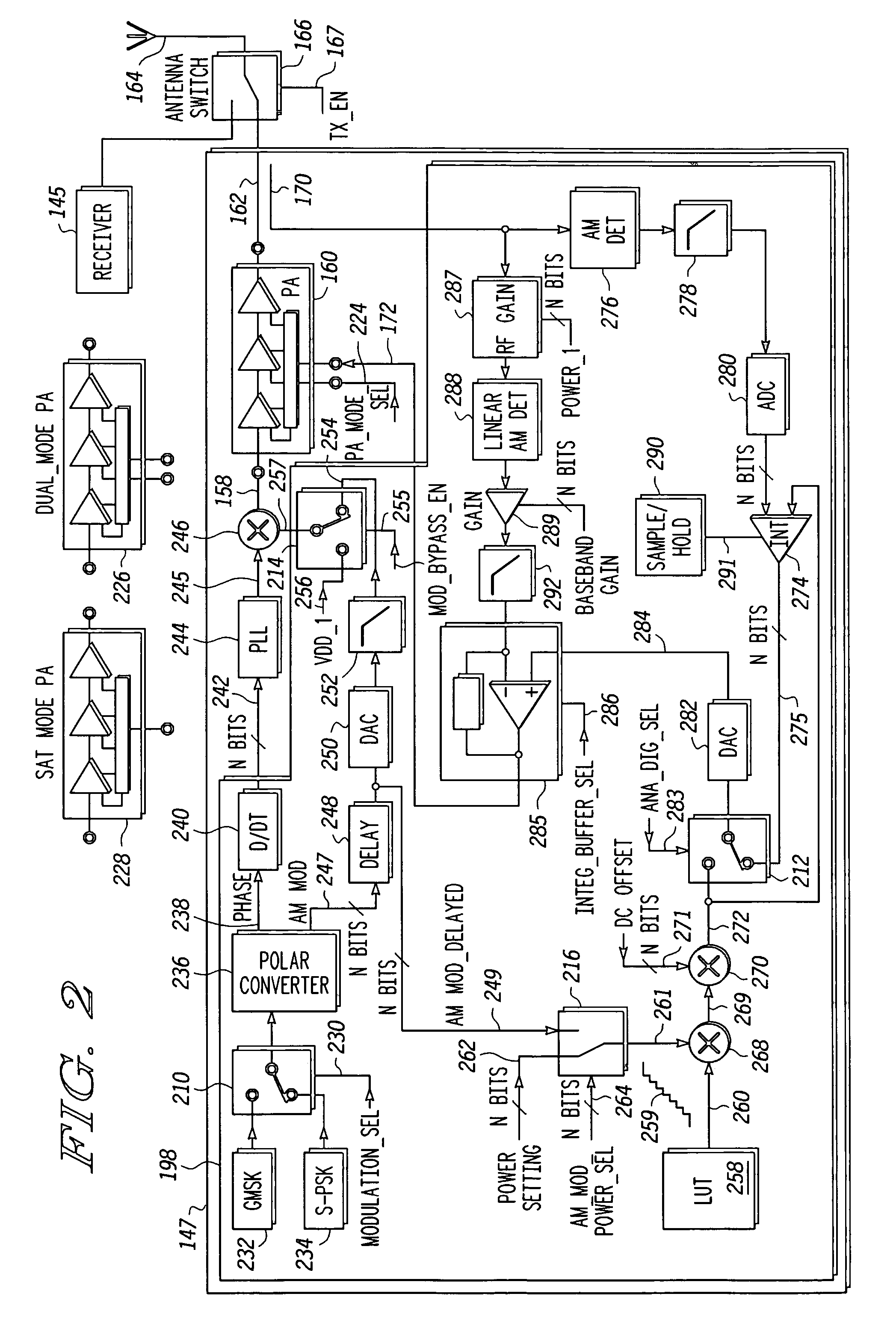Configurable multi-mode modulation system and transmitter
a multi-mode modulation and transmitter technology, applied in the direction of low-noise amplifiers, amplifier types, amplifiers, etc., can solve the problems of undesirable am to am and am to pm distortion, linear pas are very inefficient, and existing gsm modulation schemes and chip set architectures are not easily adapted to transmit signals
- Summary
- Abstract
- Description
- Claims
- Application Information
AI Technical Summary
Benefits of technology
Problems solved by technology
Method used
Image
Examples
Embodiment Construction
[0019]With reference now to the figures, and in particular with reference to FIG. 1, there is shown a simplified block diagram illustrating a portable radio communications device 100, in accordance with a preferred embodiment of the invention. Communications device 100 includes speaker 102, display 104, keyboard 106, and microphone 108, all connected to baseband subsystem 110. In a particular embodiment, communications device 100 can be, for example but not limited to, a portable telecommunication handset such as a mobile cellular-type telephone. Speaker 102 and display 104 receive signals from baseband subsystem 110 via connections 112 and 114, respectively, as known to those skilled in the art. Similarly, keyboard 106 and microphone 108 supply signals to baseband subsystem 110 via connections 116 and 118, respectively, as known to those skilled in the art. Baseband subsystem 110 includes controller 120, memory 122, analog circuitry 124, and digital signal processor (DSP) 126 in co...
PUM
 Login to View More
Login to View More Abstract
Description
Claims
Application Information
 Login to View More
Login to View More - R&D
- Intellectual Property
- Life Sciences
- Materials
- Tech Scout
- Unparalleled Data Quality
- Higher Quality Content
- 60% Fewer Hallucinations
Browse by: Latest US Patents, China's latest patents, Technical Efficacy Thesaurus, Application Domain, Technology Topic, Popular Technical Reports.
© 2025 PatSnap. All rights reserved.Legal|Privacy policy|Modern Slavery Act Transparency Statement|Sitemap|About US| Contact US: help@patsnap.com



